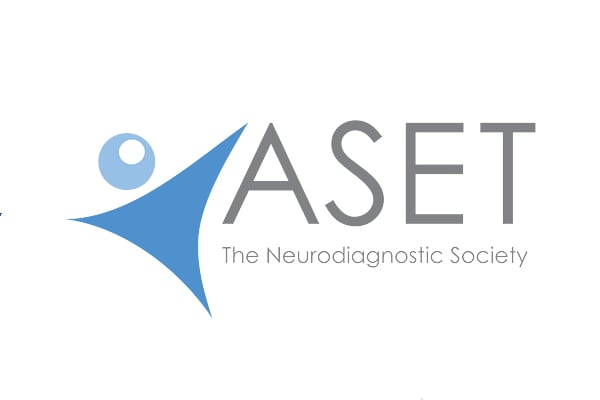Healthcare Career Wisdom from a Nurse
Laboure College hosted it's commencement with speaker Cheryl Kane in May 2018.
Electroneurodiagnostic technologist. It’s a mouthful, isn’t it? This tongue twister is also known as a neurodiagnostic technologist or EEG technician.
No matter which term you use, a career in neurodiagnostic technology can be exciting and challenging. And it might be a good career choice for you!
Are you a techie who also happens to be interested in pursuing a career in healthcare?
Or perhaps you would like to work in healthcare but the sight of blood or needles makes you squeamish.
Maybe you are looking for a healthcare career that doesn’t require a 4-year college degree and a mountain of debt.
Here’s some good news!
Electroneurodiagnostic technology combines direct patient care with technology that records the electrical impulses emitted by the brain, spinal cord, and nervous system.
Neurodiagnostic technology doesn’t involve blood, body fluids, or needles ...unless you decide to specialize in a type of testing performed in the operating room.
Labouré College of Healthcare offers a neurodiagnostic technology program that can be completed in 12 months and is affordable.
If this sounds like a field that you’d like more information on, keep reading as we take a deep dive into what electroneurodiagnostic technology is, what a neurodiagnostic technologist does, and what career opportunities you can expect to enjoy as a neurodiagnostic technologist.
Then we’ll explain how you can get started on the road to becoming a registered neurodiagnostic technologist.
Electroneurodiagnostic technology is an allied healthcare field that focuses on recording and studying the electrical impulses of the body’s brain, spinal cord, and nervous system.
Neurodiagnostic tests provide information that helps doctors diagnose and treat neurological disorders, such as seizures, headaches, brain tumors, and sleep problems.
There are a variety of tests that are used in neurodiagnostics. The primary test is called an EEG, or electroencephalogram. This test measures the brain’s electrical activity through the use of electrodes that are attached to the scalp. This test is primarily used to diagnose seizure disorders.
A neurodiagnostic technologist, or EEG tech, is a healthcare professional that conducts neurodiagnostic testing. Neurodiagnostic technologists operate the equipment that records the electrical activity produced by the brain, spinal cord, and nerves.
Neurodiagnostic technologists begin their training by learning how to perform an EEG. Once they are proficient in performing high-quality EEG testing, neurodiagnostic technologists can learn to perform other electroneurodiagnostic technology procedures, such as evoked potentials (EP), polysomnograms (PSG or sleep studies), and nerve conduction studies (NCS).
Neurodiagnostic technologists administer tests that are ordered by providers. The technologist will:
After the testing is complete, the technologist may be asked to help the provider interpret the test results.
Neurodiagnostic technologists also help maintain testing equipment, meet with providers and other technologists, and eventually may be asked to mentor and train electroneurodiagnostic technology students.
Above all, neurodiagnostic technologists work as part of a team of healthcare professionals to provide quality care to patients.
Neurodiagnostic technologists work mainly in hospitals but are also employed in doctor’s offices and specialized clinics, such as neurology and sleep clinics.
Some neurodiagnostic technologists pursue further training to become neuromonitorists. Certified in neurophysiologic intraoperative monitoring (CNIM), a neuromonitorist monitors a patient's brain, spinal cord, and/or nervous system while they are under anesthesia, such as during surgery.
The neuromonitorist notifies the surgeon of any changes in brain activity that might indicate a problem, such as the early signs of a stroke. This career path is a great choice for people who don’t mind seeing blood or needles.
First, let’s talk about how to set yourself up for success as a neurodiagnostic technologist.
Completing an accredited program in neurodiagnostic technology will qualify you to take the Registration Examination for Electroencephalographic Technologists (R. EEG T.), administered by the American Board of Registration of Electroencephalographic and Evoked Potential Technologists (ABRET).
While you can work as a neurodiagnostic technologist without having the registered EEG technologist (R. EEG T.) credential, it’s important to understand why you should seek certification.
As with most professional healthcare roles, credentialing shows that you have met minimum competency standards and are committed to providing quality care to patients. Patients will benefit from your best-in-practice care and your employer will see you as a valuable addition to their team. In fact, many employers require neurodiagnostic technologists to be credentialed within a specific time frame after they are hired.
Once you have that first credential, there are other credentials you can seek, depending on your position, your experience, and your goals.
For example, neurodiagnostic technologists can become registered as evoked potential technologists (R. EP T.) or nerve conduction study technologists (R. NCS T.). Technologists can also seek certification in other specialty areas or different testing modalities, such as long-term monitoring (CLTM), complex spine monitoring during surgery (CNIM-CS), or magnetoencephalography technology (CMEG).
A career in neurodiagnostic technology can lead to opportunities in other areas of healthcare, such as research or education.
As researchers, technologists can play a role in the development and testing of new electroneurodiagnostic technologies and procedures.
Or you could find yourself training neurodiagnostic technology students, either as part of your clinical job or as an educator with an accredited training program.
If you’d like to take your neurodiagnostic technology career into the operating room, Labouré offers an Intraoperative Neuromonitoring Program. This 8-month program will prepare you to take the ABRET Intraoperative Neuromonitoring (CNIM) exam.
On average, a neurodiagnostic technologist makes almost $45,000. Job openings are expected to grow at an average rate through 2031, with neurodiagnostic technology job openings expected to number around 12K.
Of course, as you gain experience, credentials, and the ability to perform more testing procedures, you’ll become more valuable to employers and may be eligible for salary increases or higher starting salaries.
To become a neurodiagnostic technologist, you’ll need to have earned a high school diploma or its equivalent. To enroll in Labouré’s neurodiagnostic technology program, your high school GPA needs to be at least 2.0, and it's recommended that you have a strong background in reading, writing, science, and math.
To be eligible to take the R. EEG T. exam, you’ll need to be certified in CPR/BLS, have documented experience performing EEGs, and:
If you have not completed a neurodiagnostic technology program, you’ll also need to have accumulated a required number of continuing education credits from the American Society of Electroencephalographic Technicians (ASET), have at least one year of clinical EEG experience, and complete an in-person assessment with ABRET.
As you can see, completing a neurodiagnostic technology program can provide you with the training and EEG experience you need to be eligible to take the national EEG registration exam, without having to accumulate additional CEUs, clinical EEG experience, and take the ABRET assessment.
You can qualify to take the national registered EEG technologist exam by completing Labouré’s neurodiagnostic technology program, a 12-month certificate program accredited by the Commission on Accreditation of Allied Health Education Programs (CAAHEP).
Labouré’s program consists of online courses paired with hands-on clinical experiences at a hospital near you.
Because Labouré’s neurodiagnostic technology program is online, you can live anywhere in the United States and complete both the online portion and the clinical requirements, as long as you have a good wired internet connection. Labouré will help you arrange clinical training with a registered EEG technologist at a hospital near where you live.
While attending Labouré’s neurodiagnostic technology program, you will:
Labouré College of Healthcare can help you prepare to enter the growing field of neurodiagnostic technology. Click here to learn more about this electrifying field and the opportunities that await students who complete the Labouré Neurodiagnostic Technology Certificate Program.

Laboure College hosted it's commencement with speaker Cheryl Kane in May 2018.

Laboure College shares fast facts such as job titles, salary expectations, job duties and more about Neurodiagnostic Technology (NDT) and Intraoperative Neuromonitoring (IONM).

Labouré College shares faculty scholarship in Neurodiagnostic Technology (NDT) and Intraoperative Neuromonitoring (IONM) during NDT Week.
© 2024 Labouré College of Healthcare. All Rights Reserved.
Comments